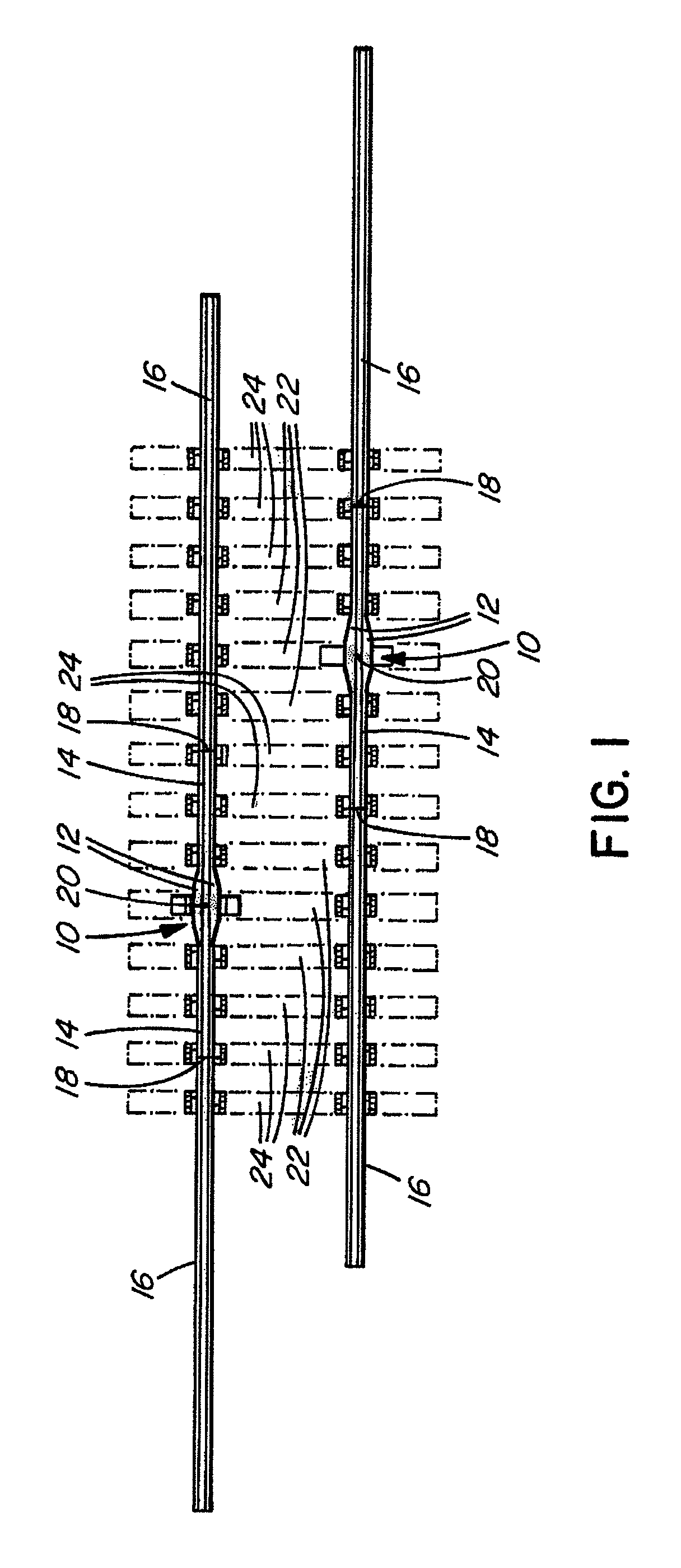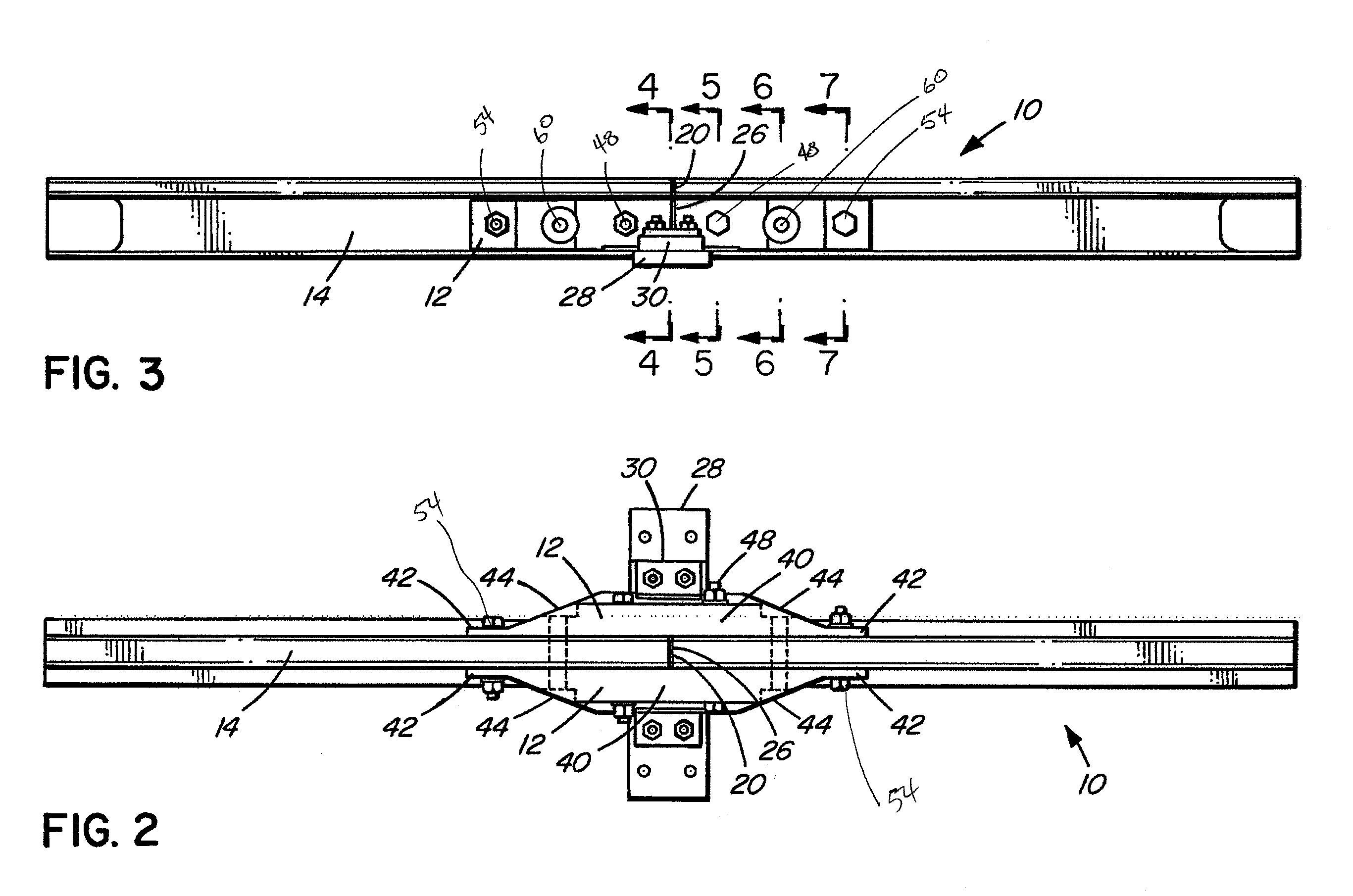Insulated rail joint assembly
a joint assembly and rail technology, applied in rail devices, roads, constructions, etc., can solve the problems of increasing the deflection at the weaker part of the rail, affecting the strength of the rail, so as to achieve the effect of improving strength and simple construction
- Summary
- Abstract
- Description
- Claims
- Application Information
AI Technical Summary
Benefits of technology
Problems solved by technology
Method used
Image
Examples
Embodiment Construction
[0045]FIG. 1 shows the preferred embodiment of the insulated rail joint assembly 10 inserted into a standard railway track. The insulated joint assembly comprises two rail segments 14 and one or two joint bars 12, the joint bars 12 being fastened to and extending between the respective web portions 64 of said first and second rail segments 14. The joint bars 12 are installed at the abutment of the rail segments 14, against the web 64, and between the feet 68 and heads 70 of the rail segments 14. Rail segments 14 preferably have thick webs, relative to the pre-determined web thickness of the running rails 16. For example, in North America, standard running rails typically have web thicknesses ranging between ⅝″ and ¾″. Rail segments 14 preferably have web thicknesses of approximately 1.5 to 2.5 times the thickness of the running rails 16. For example, 136 TW rail segments may be used in an insulated joint assembly that is to be used between running rails having a web thickness of ⅝″ ...
PUM
 Login to View More
Login to View More Abstract
Description
Claims
Application Information
 Login to View More
Login to View More - R&D
- Intellectual Property
- Life Sciences
- Materials
- Tech Scout
- Unparalleled Data Quality
- Higher Quality Content
- 60% Fewer Hallucinations
Browse by: Latest US Patents, China's latest patents, Technical Efficacy Thesaurus, Application Domain, Technology Topic, Popular Technical Reports.
© 2025 PatSnap. All rights reserved.Legal|Privacy policy|Modern Slavery Act Transparency Statement|Sitemap|About US| Contact US: help@patsnap.com



